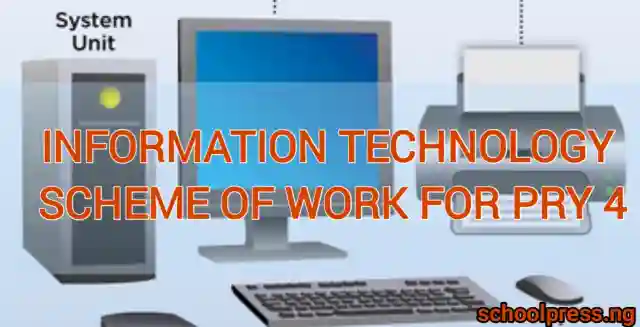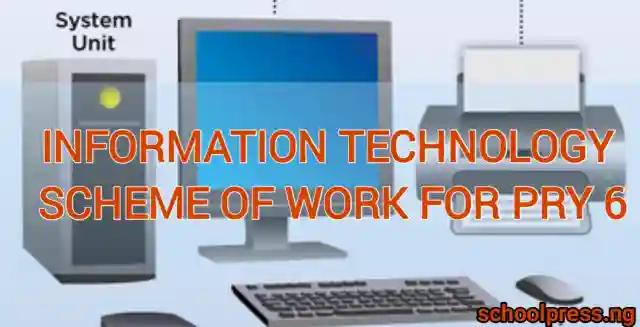Modern education is impossible without information technology, which is willing to fully prepare young children for competent activity in the digital environment. This article is dedicated to the Information Technology Scheme of Work for Primary 4 of 8-9 years of age. The scheme has three terms and proposes studying a range of I.T. topics, programs, and issues. At the same time, the scheme is the basis for further development of I.T. competence.
The first term of the scheme focuses on enabling students to grasp fundamental concepts relating to IT and how it is applied. Learners are taken through revising the previously taught topics to be able to retain and have the knowledge reinforced. An examination of storage and output devices follows to ensure they understand them further.
The students are also taught how to use Microsoft PowerPoint, a presentation software, and familiarized with the process of developing creative and informative slideshows, the use of the toolbar, and the menubar. In addition, they are also introduced to coding, where they develop their logical and problem-solving skills.
The second term focuses on IT practical skills and venturing into the applicative and creative aspectss of the process. At first, the students refresh the theory on typing and saving in Microsoft PowerPoint, and with the renewed experience, they proceed to the document save and open process.
After that, they discover the formatting options, preparing the basis for a creatively compelling presentation. For a little cyber security awareness, we integrated lessons on computer-borne disease and their remedies. Finally, the children get informed about coding and apply it to solve creative tasks.
At the end of the third term scheme of work, pupils IT knowledge is expanded and their capacity for understanding further advanced concepts and applications is prepared. The revision lessons serve to strengthen the knowledge acquired before so as to help comprehend fully what one has done through the year.
The pupils get to the depth of data processing and information management where they are taught how to effectively organize, analyze and interpret data.
They actively search primary information sources and acquire critical thinking skills to assess the acquired digital information. Microsoft Excel is introduced as a handy instrument for future data manipulation and analysis.
Additionally, a short description representation of programming languages is of importance for further coding knowledge. Scratch programming is also presented in the lesson, straightforward software that enables interaction between digital stories, games, and animation creation without difficulties.
Table of Contents
First Term Information Technology Scheme of Work for Primary 4
| WEEK | |
| 1 | Revision |
| 2 | Storage devices |
| 3 | Output devices |
| 4 | Launching of Microsoft PowerPoint |
| 5 | Microsoft Power |
| 6 | Microsoft Powerpoint toolbar |
| 7 | Mid-term Break |
| 8 | Microsoft PowerPoint Menubar |
| 9 | Launching paint |
| 10 | Introduction to computer coding |
| 11 | Revision |
| 12/13 | Examination |
Check All Primary Schemes of Work Below
Second Term Information Technology Scheme of Work for Primary 4
| WEEK | |
| 1 | Revision |
| 2 | Typing and saving on Microsoft PowerPoint |
| 3 | Typing and saving on Microsoft PowerPoint |
| 4 | Formatting |
| 5 | Virus |
| 6 | Anti-Virus |
| 7 | Mid-term Break |
| 8 | Coding |
| 9 | Coding |
| 10 | Uses of coding |
| 11 | Revision |
| 12/13 | Examination |
Check All Jss Scheme Of Work Bellow
Third Term Information Technology Scheme of Work for Primary 4
| WEEK | |
| 1 | Revision |
| 2 | Data processing |
| 3 | Information |
| 4 | Information (continued) |
| 5 | Sources of information |
| 6 | Microsoft PowerPoint toolbar |
| 7 | Mid-term Break |
| 8 | Launching of Microsoft Excel |
| 9 | Introduction to programming languages |
| 10 | Scratch programming: the three Sofscratch |
| 11 | Revision |
| 12/13 | Examination |
Check All SSS Scheme Of Work Bellow
Conclusion
The Information Technology Scheme of Work for Primary 4 offers a systematic way of delivering IT education to harness the growth needs of the pupils. The incorporation of theoretical concepts with practical aspects of learning equips pupils with resourceful digital skills, including literacy, proficiency, and creativity.
With adequate experience and interaction with the subject matter, pupils can navigate various aspects of the digital platform with confidence and competence responsibly. Advancements in the digital era and the inevitable changes have a daring need for the digitized generation with the requisite IT skills.









